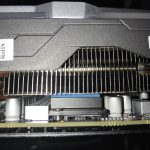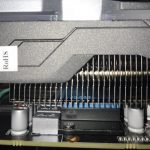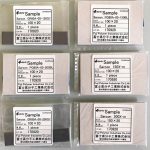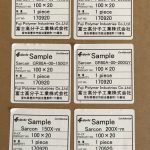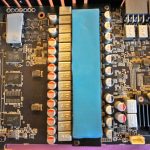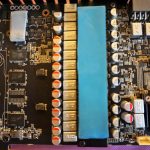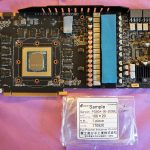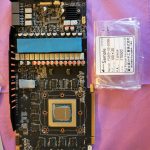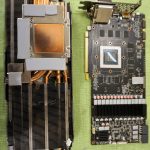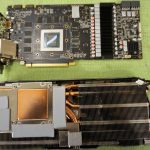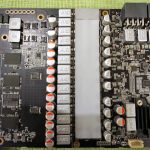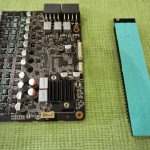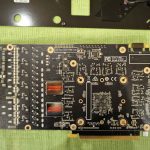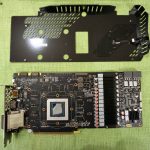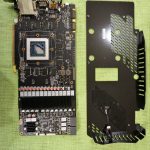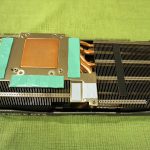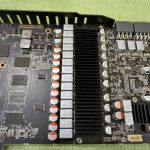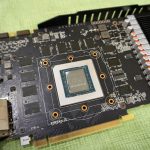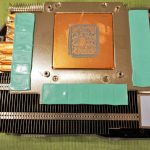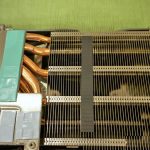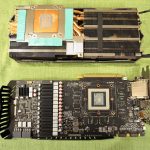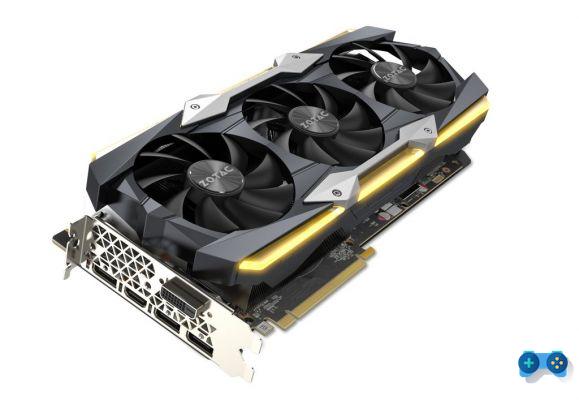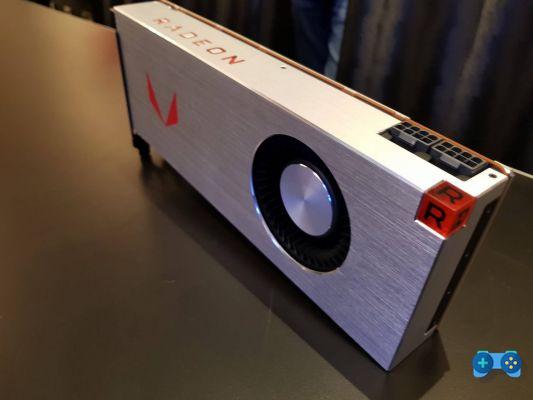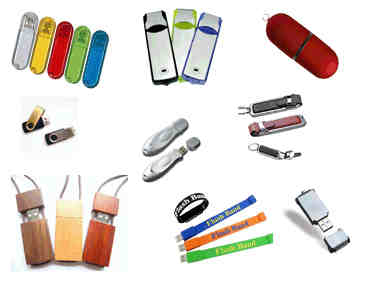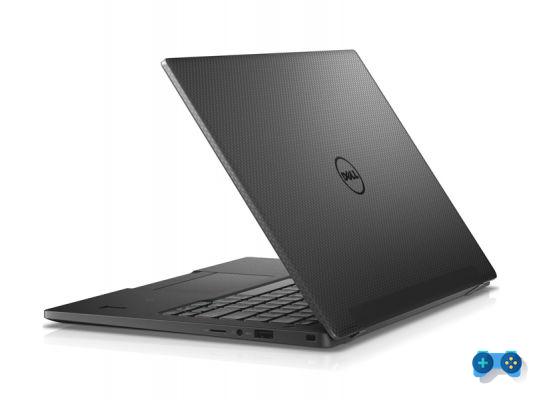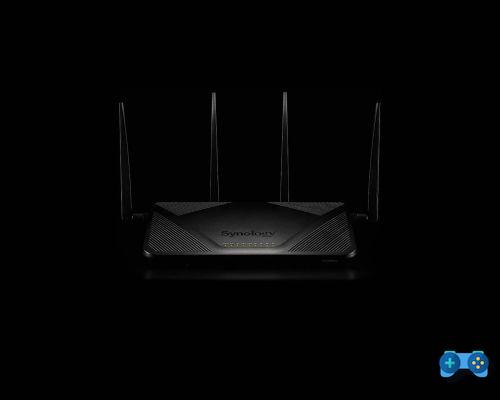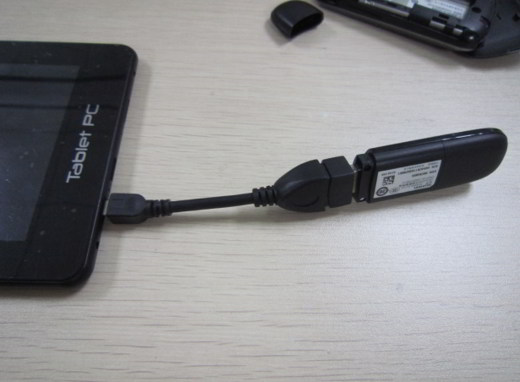BOOST 3.0 or theoverclocking according to NVIDIA
NVIDIA with the 10 series of its cards based on the Pascal chipset, has completely changed the way his cards can be overclocked, greatly simplifying the whole process.
The idea is simple, to allow all gamers to make the most of their card without complicated operations. Traditionally, in fact, the management of the clock of a card has always been, so to speak, linear. A certain voltage is required to increase the card's clock and this process is well represented by the classic voltage curve present in MSI afterburner. At each point of the curve, which represents a certain voltage, a certain clock corresponds.
With Boost 3.0 NVIDIA shuffled the cards by introducing voltage and dynamic clocks based essentially on Power Draw, Thermal Limits and Voltage Limits, ie energy absorption, thermal limits and voltage limits. The first indicates how many watts or better the total absorption that the card will have at full load; the second indicates the maximum temperature above which, in order to avoid damage, the card will thermal throttle, the third, as it is easy to imagine how many volts the card is authorized to use. These are operating parameters, but also and above all safety parameters, which allow correct and stable operation of the board.
As you can imagine, although the new Boost 3.0 allows most gamers to have one card which, in essence, overclocks itself, the limitations imposed by NVIDIA block much of the potential of Pascal chipsets. The first limit is that of the voltage, fixed immutably at 1.093v. No ABP, or (Authorized Board Partners) is authorized to pass it, except for some “special” boards such as the MSI Lightning family boards, or the EVGA KingPINs.
The other limit is that of the maximum absorption, set for the 1080 Ti reference around 250w (+ 120%). In this case, however, the manufacturers are authorized to modify these limits and, in some cases, not to impose them at all (some ASUS cards with BIOS XOC, disable all the limitations inherent in absorption, voltage and thermal limits). Since the maximum voltage is limited, the extra power that the VGA is allowed to "draw in" is generally unnecessary.
The thermal limit, which by default is set at 80 ° C and can finally be raised up to 90 ° C. This is one of the most important parameters, since all the energy produced generates heat that must be dissipated and if this is not done correctly or for ventilation problems in your case, or for design problems of your card, Pascal's potential will come generally wasted. It is for this reason that in recent times we have seen a proliferation of customized versions of the same card, even by the same manufacturer.
Zotac GeForce GTX 1080 Ti AMP! Extreme - the most beautiful
La Zotac 1080 Ti AMP! Extreme it is one of the most “beautiful” cards in circulation; its design dominated by large RGB LEDs that run throughout the huge cooling system of the card, is undoubtedly spectacular. These are digitally controlled LEDs that can be conveniently set through the Zotac FireStorm application. The Zotac 1080 Ti AMP! Extreme, if we exclude the KINGPIN and Lightning versions of which we have mentioned, is also one of the cards with the highest base clock among those in circulation (Base: 1645 MHz, Boost at 1759 MHz) and above all the largest, with a footprint which occupies 2,5 PCIexpress slots (almost three actually), as you can verify from the technical data below.
Technical Specifications Zotac 1080 Ti AMP! Extreme
GPU: GeForce GTX 1080 Ti
CUDA cores: 3584
Video Memory: 11GB GDDR5X
Memory Bus: 352-bit
Engine Clock:
Base: 1645 MHz
Boost: 1759 MHz
Memory Clock: 11.2 GHz
PCI Express: 3.0
Display Outputs:
3 x DisplayPort 1.4
HDMI 2.0b
DL-DVI-D
HDCP Support: Yes
Multi Display Capability: Quad Display
Recommended Power Supply: 600W
Power Consumption: 320W
Power Input: Dual 8-pin
DirectX: 12 API feature level 12_1
OpenGL: 4.5
Cooling: 3 x 90mm fans
Slot: 2.5-Slot
SLI: Yes, SLI HB Bridge Supported
Supported OS: Windows 10 / 8 / 7
dimensions: 325 148 x x 56.6mm
Accessories:
2 x Dual 6-pin to 8-pin mesh wrapped power adapter
Driver disk
user Manual
This is definitely an extreme card that fits into a premium sector, even for the price (about 800 euros) for those looking for top performance. As many national and international reviews have highlighted, however, the different custom versions of the 1080 Ti, all have more or less similar performance with a difference that can be seen mainly in the cooling system, which as we have seen plays a fundamental role in performance with NVIDIA BOOST 3.0. in overclock.
From such a massive card, which even advertises 16 phases (!), One would expect a perfect cooling system, and instead, despite the size of the heatsink and the presence of three fans, some defects emerged from the beginning. design especially from the thermal point of view, which in fact leave much of the card's potential wasted.

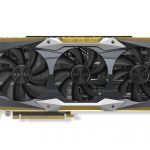
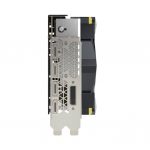
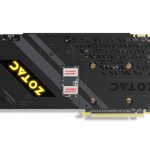
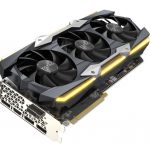
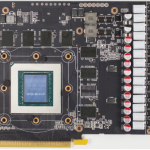
The card in full load operates at an operating temperature around 66/68 degrees if all the main options are left set as standard. At this temperature, the fan noise is around 40dB. In short, the card makes itself heard and is definitely the loudest component of our rig. The temperatures are not at all different from those of the other custom 1080 tiers from all other manufacturers. If on the one hand this makes us feel comfortable, on the other we ask ourselves: what is this huge heat sink, the three fans and the occupying three PCI Express slots if the temperatures are the same as other cards?
Using a temperature measurement system of the VRMs we immediately reveal the mystery: under a small special heatsink, the VRMs operate in a range between 90 and 100 ° celsius: we are still below the maximum operating range of the components, but it is definitely too high a value for a card with a dissipation system of this magnitude.
The fans
The first step we took to lower the operating temperature of the card concerns the fans. Zotac has provided the Fan Stop option on this board, which disables the operation of the fans until the temperature reaches 45 ° C. While this may seem like a great thing, it actually leads you to have a much higher base temperature than you should. Considering that the low-speed fans are almost inaudible, the first thing we did is disable, through the FireStorm software (spectra menu, scroll down to the FAN item, disable Fan Stop).
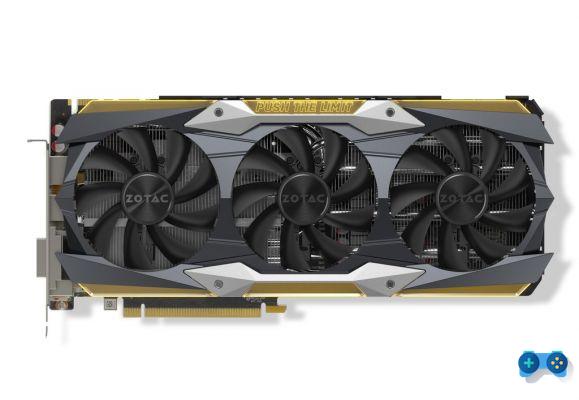
By doing so we first lowered the Idle temperature of the card, which goes from 40-43 ° to 32-33 ° with active fans. Obviously this is not enough when it comes to lowering the operating temperatures during benchmarks but above all gaming. In an enclosed environment, especially if your processor is overclocked, the temperatures inside the case can be very high. If you decide to overclock the graphics card, the temperature of the VRMs could reach 100/110 °, still in the operating margin of the components, but a much too high temperature if you want to keep a constant clock and push the card and the memories to the fullest of their abilities.
Once the card is opened, we immediately notice the problem. Zotac primarily used not very energy efficient components. At 1,1v the temperatures generated by the mosfets (hi-side mosfet QN3103 and low side mosfet QN3107) are incredibly high, touching 95 ° with a very low efficiency: 200 A - 25w, 300 A - 45w, 400 A - 62w ; To give an example, the Zotac in question is also beaten in efficiency by the Founders Edition, which generates heat with 200A 20w, with 300A 35w and 400A 44w. The 16 phases promised by the card, the highest number on a custom 1080ti card, actually makes little sense with such thermally and power-inefficient mosfets.
This made it necessary to adopt a strategy that is not very common in cards from other manufacturers. Zotac has in fact separated the VRM cooling system from the rest of the system provided for memories and GPUs. The card, as you can see in the photos below, has a large heat sink that remains at least on the right side, practically unused. The VRMs are in fact equipped with a small (and we believe not very efficient) autonomous heatsink that remains separate from the body of the board.
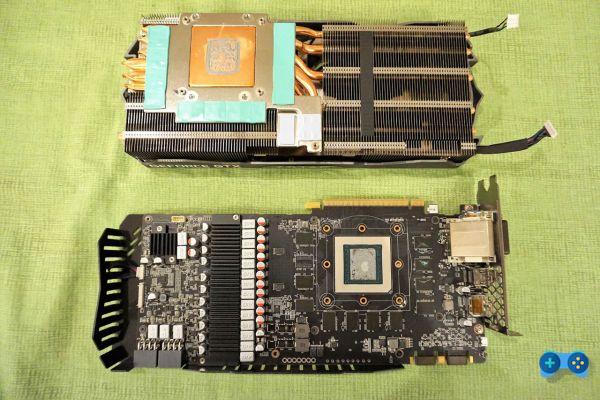
But this is not the only problem. Zotac, probably to prevent the two components from damaging each other, placed a small rubber tape on the main heat sink, which does nothing but block the flow of air from the fans directed towards the VRM heat sink. It basically isolated the VRMs. This is a problem that unfortunately is not the first time it has happened in this generation of NVIDIA cards, albeit the first with the manufacturer Zotac. In the past, EVGA had already run into at least a couple of cards in this gross and trivial engineering mistake with the EVGA GeForce GTX 1080 ACX 3.0, EVGA GeForce GTX 1080 FTW DT ACX 3.0, EVGA GeForce GTX 1070 ACX 3.0, and EVGA GeForce GTX cards. 1070 FTW DT ACX 3.0. After a first intervention by the manufacturer, via BIOS update which in practice clipped the wings of the cards preventing them from reaching the offending temperatures, EVGA decided to carry out a recall of the cards or alternatively to send all owners additional thermal pads that went to replace the offending ones.
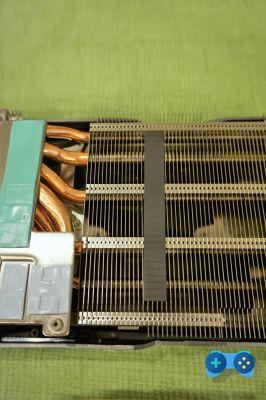
Returning to the analysis of our Zotac, what does the above mean in terms of performance? If you are not interested in building a highly energy efficient system, very little. The performances are in fact in line with those of other cards in the same price range, if not higher, the point is that with a cooling system like the one set up by Zotac, not being able to fully exploit it and pull out a few MHz plus it's really a shame.
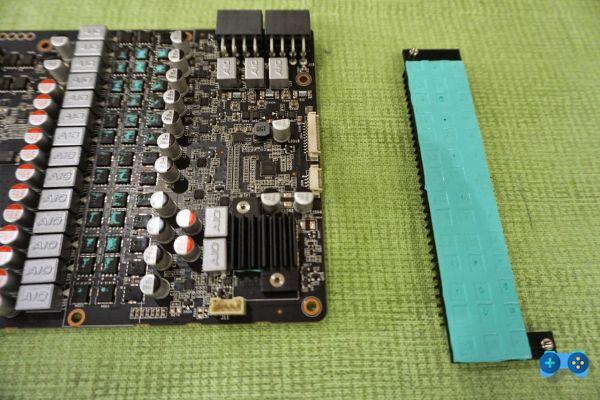
Eager to make the most of the potential of a card that promises sparks on the scehda, and which is undoubtedly one of the most beautiful cards currently in circulation, we turned to FUJIPOLY, perhaps the world's largest thermal pad manufacturer in the world. Its products, all of the highest quality, are used in those sectors where correct heat dissipation is essential, in the best possible way.
However, finding your way around their huge catalog (which you can get an idea of here) is not an easy task. We therefore decided to rely directly on one of their experts explaining our intentions. In just over a week thanks to the help of the extraordinary Patricia Kollarikova, Sales Engineer of Fujipoly Europe Ltd. We were ready to try some products that could be right for us. In particular, our test was carried out with the following products, all belonging to the Fujipoly Sarcon family:
- Sarcon PG80-A-00-150BL (thickness 1,5mm 100x20mm) with maximum thermal conductivity of 13 W / mK
- Sarcon PG80-A-00-200BL (thickness 2mm 100x20mm) with maximum thermal conductivity of 13 W / mK
- Sarcon GR80A-00-150GY (thickness 1,5mm 100x20mm) with maximum thermal conductivity of 13 W / mK
- Sarcon GR80A-00-200GY (thickness 2mm 100x20mm) with maximum thermal conductivity of 13 W / mK
- Sarcon 200x-m (thickness 2mm 100x20mm) with maximum thermal conductivity of 17 W / mK
- Sarcon 150x-M (thickness 1,5mm 100x20mm) with maximum thermal conductivity of 17 W / mK
The last two Thermal Pads, in particular, represent the product with the highest thermal conductivity on the market
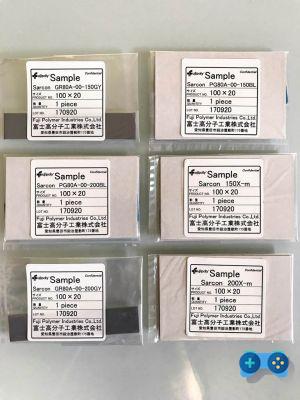
The installation of the thermal pads is not too complicated, and at least in this specific case, we did not have to remove seals that could invalidate the warranty in any way. Despite this, replacing thermal paste and pads could be considered tampering with the board and would therefore invalidate the manufacturer's warranty. Before venturing into an operation of this type, our advice is to check the terms of the warranty directly with the manufacturer.
Having available products with different characteristics, before proceeding with the application it was necessary to study a little the technical characteristics of the different products. In particular, in addition to identifying the correct thickness of the thermal pads originally used by the manufacturer, it was necessary to evaluate on which of the components to apply the most efficient Thermal Pads, in our case the Sarcon XM, due to the compression provided by tightening the screws.
Once the VRM heatsink was removed, we proceeded to apply the Sarcon 150x-M, with a thickness of 1,5mm directly on the VRMs, the same thermal pad was also used for the memory mosfets, but with a different thickness, 2 .mm and 1,5mm. In this specific case it would not have been necessary as the temperatures generated are very low and in line with those of all the other 1080ti cards (1.35v - 35A - 7 W).
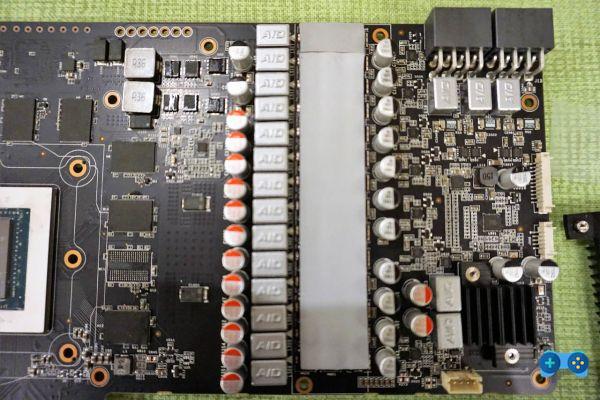
Unfortunately we did not have a sample available for us to replace the thermal pads of the memories. Those left at our disposal in fact had an excessive thickness and were not very compressible, which, once the card was mounted, meant that the heatsink did not make enough contact on the GPU causing an anomalous increase in temperatures. For this reason we had to go back to the original pads (which we luckily had properly preserved). The general temperatures in this regard could have been even better by replacing the original memory pads (usually those used in large production have a conductivity coefficient between 2-3 W / mK.
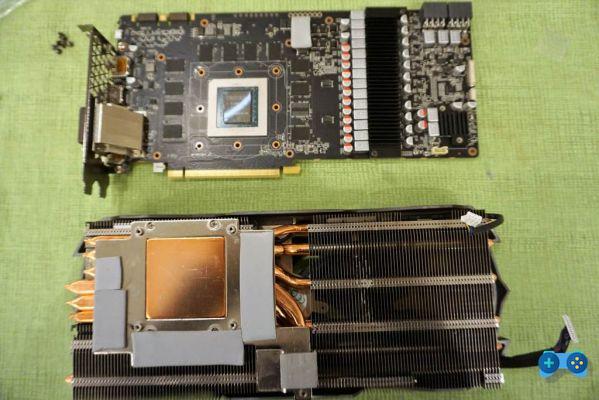
Before applying another layer of thermal pad on the VRM heatsink (PG80A 13W / mK, in the photo below in blue), in order to allow contact with the main heatsink and heat dissipation, we decided to try leave the heat sink free, i.e. without any thermal pad and without even the rubber support, in order to evaluate the impact of only replacing the original thermal pad on the VRMs. This gives the fans the ability to pass through the heatsink and cool the VRM heatsink.
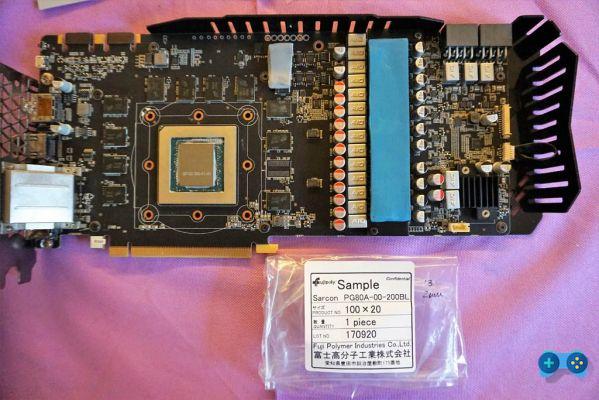
The temperature difference of the VRM compartment was immediately evident with a drop that in full load touched 7/8 degrees, bringing the card temperatures well below the original operating range.
We then repeated the experiment by applying the 80mm PG2A between the VRM heatsink and the main heatsink of the board. Also in this case the temperatures have dropped, but even more massively. Thanks to a better heat dissipation of the VRMs, which now in full load travel with temperatures around 80-85 degrees, against the previous 95-100, we were therefore able to complete the modification to obtain an overall drop that arrives up to 15 degrees! Recall that a temperature of 80-85 is fully in the operating range of the VRMs.
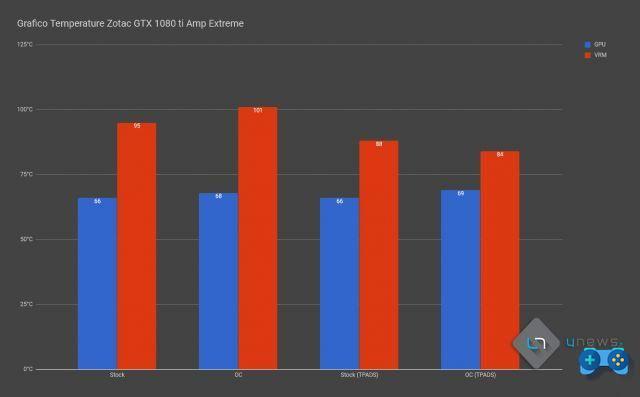
What does this mean in substantial terms? As we explained at the beginning, the temperature is one of the fundamental elements of the new BOOST 3.0 from NVIDIA; lowering the temperature means being able to overclock the card even further, it means having greater general stability, but it is also an advantage for those who are not willing to overclock manually. In fact, the card at lower temperatures will hold the maximum boost for longer, without sudden drops, giving you much higher performance and more general stability.
While with the factory thermal system the boost of the card only exceeds the 2000 MHz threshold for a few seconds, then settling around 1930 MHz. With the mod these values change totally. Without any tweaking of the voltage curve, the card touches the 2033 MHz boost, then settling stably on 2012 mhz it is a difference of about 80 MHz, we repeat without any modification to the voltage of the card.
In overclocking the results are even more surprising. The card in fact touches a boost of 2150, then settling on 2088 MHz of average frequency while the temperature remains anchored to the 67 ° C of the core, and to the 86/87 ° of the VRM, all of course in a closed case.
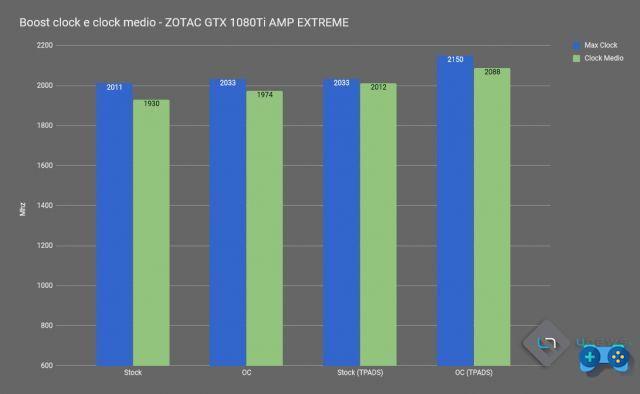
Final comment
In short, Fujipoly's thermal pads do their job very well, overcoming some really gross design inefficiencies for a major manufacturer like Zotac and are certainly the most effective upgrade you can do not only to make your graphics card less hot but also, for the reasons illustrated, more performing, regardless of whether you have intention to overclock the card or not. On the 1080 Ti, in fact, the advantages of overclocking should always be verified in game, as increasing the clock does not always correspond to an actual increase in game performance, and only a few more points in the synthetic benchmarks. Exceeded a certain limit, indeed, excessive overclocking results in a loss of stability that affects the score in the benchmarks and the overall performance of the card. Not to mention that unless "shunt mod" and replacements of the standard bios to eliminate the power draw limit, you will soon have to deal with the limit of energy absorption and voltage that cuts the frequencies. As for the Zotac in question, it is a card that all in all does its job very well and does it better than others, thanks to a very strong OC already in the factory. However, it is one of the most expensive premium 1080ti in circulation and from a card of this type we would have expected the best especially in terms of heat dissipation, which is the only aspect that really differentiates the different custom that have more or less comparable real performance. with variations in the order of 5/10%. Go ahead with the use of not exactly efficient mosfets (they are the same for the record used on the cheapest 1070 on the market), however, leave a gigantic cooling system like that of the Zotac 1080 Ti AMP unused! Extreme and above all bulky (almost three PCI Express slots) is really a big mistake that thwarts the potential of this card. The modification, however, gave us a completely new card, with correct heat dissipation and capable of offering absolutely outstanding performances, probably the highest among those recorded among the custom 1080ti (excluding the various KingPIN or Lightning that use a PCB and a completely different circuitry).
